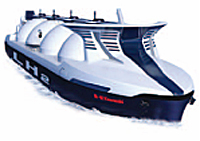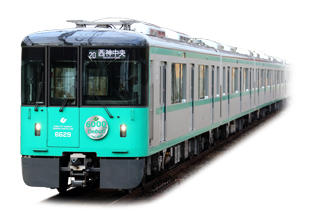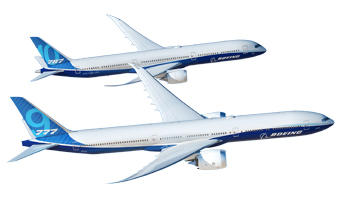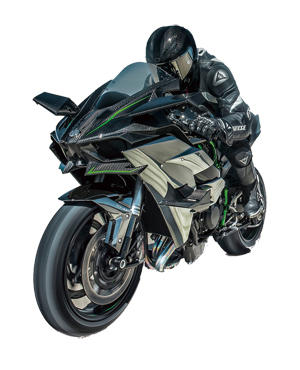Providing Safe and Secure, Clean, Comfortable Movement of People and Goods by Land, Sea, and Air
As a manufacturer of various modes of transportation, including ships, rolling stock, aerospace systems and motorcycles, Kawasaki seeks to respond to the greater movement of people and goods, paralleling globalization, while reducing risk to the environment.

Ship & Offshore Structure Company
Initiatives to Create Social Value

The Ship & Offshore Structure Company is contributing to environmental conservation by promoting the spread of LNG-fueled ships and developing and building large hydrogen-fueled liquefied hydrogen carriers. Compared with heavy oil, the use of LNG enables substantial reductions in emissions of atmospheric pollutants, such as nitrogen oxide (NOx) and sulfur oxide (SOx). By developing and building a variety of LNG-fueled vessels, we are helping to meet NOx and SOx emissions regulations for ships to prevent air pollution over the sea. Furthermore, we are providing our LNG-fueled propulsion systems for ships constructed by other shipbuilders, and working to commercialize FGSSs* to promote the operation of environmentally friendly LNG-fueled vessels around the world. We are also developing high-capacity liquefied hydrogen carriers. As hydrogen emits no CO2 when used as fuel, it is the ultimate in clean energy. By commercializing the world’s first ships that can economically carry large volumes of hydrogen, Kawasaki will promote the spread of hydrogen energy and contribute to the realization of a CO2 emission-free society. In addition, we are developing hydrogen-fueled ship propulsion systems.
2030 Target/KPI
- LNG-fueled ships/large hydrogen-fueled liquefied hydrogen carriers built annually: 1
- Orders received for LNG fuel gas supply systems annually: Multiple
Goals for fiscal 2021
- Complete construction of a small liquefied hydrogen carrier (pilot ship)
- Complete the development and commercialization of FGSSs
- Receive multiple orders for LNG-fueled ships
- Receive orders for FGSSs
Fiscal 2019 Results
- December 2019: Developed LNG dual-fuel system for medium-sized tankers, and for a tanker built by another company using this system received approval in principle (AiP)
- December 2019: Launched a small liquefied hydrogen carrier
- March 2020: Installed a liquefied hydrogen storage tank for marine transport on the small liquefied hydrogen carrier

Rolling Stock Company
Initiatives to Create Social Value

The Rolling Stock Company has designated as its vision for 2030 helping to build better global transportation infrastructure by manufacturing rolling stock that is safe and comfortable to ride in, highly reliable, highly cost efficient over its life cycle, and energy saving to minimize the burden on the environment. To this end, we will promote participation in high-speed train projects at home and abroad and continue to provide rolling stock to customers in Japan, North America, and Asia while seeking to participate in projects to build new rolling stock infrastructure in emerging Asian countries. At the same time, we will develop a diverse lineup of more environmentally friendly products, including locomotives, electric train cars, and diesel railcars. In addition, to better meet customer needs, we will further develop monitoring technologies that combine sensing, image analysis, and IoT technologies; work to maintain and improve safety and dependability; improve train maintenance efficiency; and contribute to the realization of train systems boasting excellent cost efficiency over their entire life cycle.
2030 Target/KPI
- Rolling stock units delivered: 1,000
- Improve efficiency and reduce need for specialized skills in maintenance, maintain and improve safe, reliable transport, and contribute to the enhancement of services and added value provided by railway operators
Goals for fiscal 2021
- Execute large projects in North America (R211 cars for the New York City Subway) as planned
- Execute projects financed by ODA loans in Asia (Dhaka Metro MRT Line-6 in Bangladesh) as planned
- Expand stock businesses to improve customer maintenance efficiency and maintain safe, dependable transportation
- Launch sales of components that leverage sensing and image analysis technologies and roll out component and service businesses aimed at proving maintenance efficiency
Fiscal 2019 Results
- Rolling stock units delivered: 528
- Conducted tests with railway companies aimed at launching sales of components that leverage sensing and image analysis technologies
- Developed products and services aimed at expanding into peripheral rolling stock businesses, including maintenance

Aerospace Systems Company
Initiatives to Create Social Value

Boeing Company
The Aerospace Systems Company has designated as its vision for 2030 providing air transportation systems combining excellent environmental performance with excellent safety and reliability. To achieve this vision, we are participating in the development of Boeing 787 and 777X aircraft as well as jet engines, such as the Trent series and PW1100G-JM, to contribute to the steady supply of low fuel consumption aircraft and low fuel consumption engines. We will also focus on the production and sale of the BK117 low-noise helicopter, which is expected to be used in firefighting, disaster response, and ambulance services. Furthermore, we aim to participate in the joint international development of new, environmentally conscious aircraft and engines and thereby contribute to environmental improvement.
2030 Target/KPI
- Provide environmentally friendly aircraft, helicopters, and engines to the market and expand the scope of participation in the development of these products
Goals for fiscal 2021
- Provide environmentally conscious aircraft, helicopters, and engines and participate in new programs
- Produce components for Boeing 787
- Sales of BK117 units: Produce finished units and components
- Produce components for Trent 1000, Trent XWB and PW1100G-JM low fuel consumption engines
Fiscal 2019 Results

- Components for Boeing 787: 167 units sold
- Sales of BK117 units: One finished unit and 83 components
- Produce components for the Trent 1000, Trent XWB, and PW1100G-JM low fuel consumption engines

Motorcycle & Engine Company
Initiatives to Create Social Value

The Motorcycle & Engine Company has designated as its vision for 2030 developing, manufacturing and delivering environmentally friendly motorcycles, as well as models with “fun-to-ride” appeal and advanced rider-support features. To realize this vision, in line with the philosophy that drives product development at Kawasaki, the concepts of “Fun to Ride,” “Ease of Riding,” and “Better Environmental Performance,” we are working to improve motorcycle performance, enhance rider-support features, and respond to tougher exhaust gas, noise, and other environmental regulations. Kawasaki aims to put motorcycles with C-ITS* functions and other advanced rider support functions on the market as soon as possible. In electric motorcycles, hybrid motorcycles, and other motorcycles powered by clean energy, we are building and evaluating the performance of prototypes with an eye to future business development.
2030 Target/KPI
- Provide motorcycles with advanced rider-support features, such as Cooperative Intelligent Transport Systems (C-ITS), as well as motorcycles powered by clean energy, including electric motorcycles and hybrid motorcycles
Goals for fiscal 2021
- Realize comfortable and convenient transportation by launching connected motorcycles with data transmission functions and help users ride with confidence by adopting rider support functions
- Clear the EU’s strict emissions regulations and other environmental regulations around the world
- Every fiscal year, achieve at least a 1.5% average increase in WMTC* fuel economy on new models over the previous models
Fiscal 2019 Results
- Implemented smartphone connectivity for the Ninja 1000SX, Z900, Ninja 650, and Z650 in 2020, expanding the lineup of models with this feature to seven. “RIDEOLOGY THE APP,” an official smartphone application, enables users to set their riding mode and confirm the status of their motorcycle using their smartphone, thereby improving riding comfort and convenience.
- Achieved an average increase in WMTC fuel economy of 1.4% across the seven models that began production in fiscal 2019 (the Z H2, Ninja 1000SX, Z900, W800, Ninja 650, Z650, and KLX230)
- Launched the Z H2 with a supercharged engine for large motorcycles achieving high power and high fuel economy
Contact
If you need more information about our business,
please feel free to contact us.






